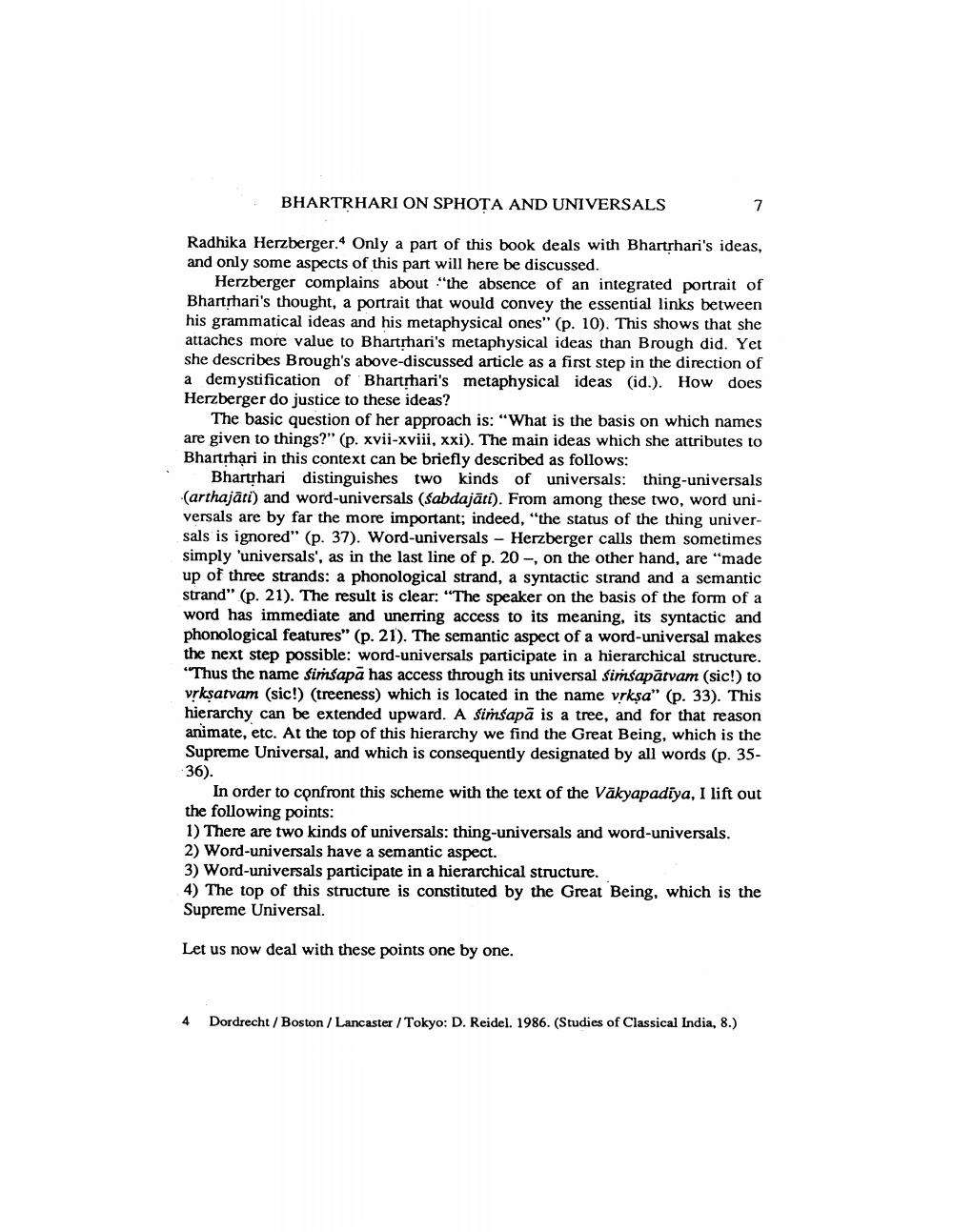Book Title: Studies On Bhartrhari 3 Author(s): Johannes Bronkhorst Publisher: Johannes Bronkhorst View full book textPage 3
________________ BHARTRHARI ON SPHOTA AND UNIVERSALS Radhika Herzberger. Only a part of this book deals with Bharthari's ideas, and only some aspects of this part will here be discussed. Herzberger complains about the absence of an integrated portrait of Bhartrhari's thought, a portrait that would convey the essential links between his grammatical ideas and his metaphysical ones" (p. 10). This shows that she attaches more value to Bharthari's metaphysical ideas than Brough did. Yet she describes Brough's above-discussed article as a first step in the direction of a demystification of Bhartrhari's metaphysical ideas (id.). How does Herzberger do justice to these ideas? The basic question of her approach is: “What is the basis on which names are given to things?" (p. xvii-xviii, xxi). The main ideas which she attributes to Bhartrhari in this context can be briefly described as follows: Bharthari distinguishes two kinds of universals: thing-universals (arthajāti) and word-universals (sabdajāti). From among these two, word universals are by far the more important; indeed, "the status of the thing universals is ignored" (p. 37). Word-universals - Herzberger calls them sometimes simply 'universals', as in the last line of p. 20-, on the other hand, are "made up of three strands: a phonological strand, a syntactic strand and a semantic strand" (p. 21). The result is clear: "The speaker on the basis of the form of a word has immediate and unerring access to its meaning, its syntactic and phonological features" (p. 21). The semantic aspect of a word-universal makes the next step possible: word-universals participate in a hierarchical structure. "Thus the name simšapā has access through its universal simsapārvam (sic!) to vrksatvam (sic!) (treeness) which is located in the name vrksa" (p. 33). This hierarchy can be extended upward. A simšapā is a tree, and for that reason animate, etc. At the top of this hierarchy we find the Great Being, which is the Supreme Universal, and which is consequently designated by all words (p. 3536). In order to confront this scheme with the text of the Väkyapadiya, I lift out the following points: 1) There are two kinds of universals: thing-universals and word-universals. 2) Word-universals have a semantic aspect. 3) Word-universals participate in a hierarchical structure. 4) The top of this structure is constituted by the Great Being, which is the Supreme Universal. Let us now deal with these points one by one. 4 Dordrecht / Boston / Lancaster / Tokyo: D. Reidel. 1986. (Studies of Classical India, 8.)Page Navigation
1 2 3 4 5 6 7 8 9 10 11 12 13 14
